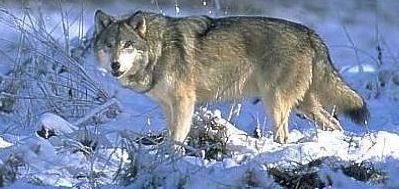
As a society we persecuted wolves, then we protected them. What’s next?
The vital role wolves play in the ecosystem is clear, and scientists generally agree that wolf reintroduction is an important goal. Controversy is not easily avoided. Wolves are important part of the ecosystem and should be protected.
Deputy Secretary of the Interior Lynn Scarlett said :
Wolves have recovered because efforts to save them from extinction have been a model of cooperation, flexibility, and hard work.
Conservationists view these moves as a mixed blessing. Once abundant across the United States, wolves were reduced to near extinction by hunting, persecution and habitat destruction. The return of wolves in the great lakes region is one of the most remarkable turn around in the annals of wild life conservation.
Just a few decades ago the 200 or so surviving wolves in the lower 48 states faced extinction. The Great Lakes wolves are a classic Endangered Species Act success story. The remarkable recovery efforts to restore the wolf have paid off, and the states are ready to assume the responsibilities of managing their own wolf populations.
Idaho and Wyoming have state management plans that are geared toward wolf eradication, not wolf conservation. Idaho’s governor has said he wants to kill more than 80 percent of the state’s wolves and the state has begun planning wolf eradication by hunting and aerial gunning. Because wolves threaten their livelihood, ranchers are the main opponents of wolf reintroduction. One solution is to pay ranchers for their losses, which Defenders of Wildlife does. This doesn’t really solve the underlying problem, however, and it is expensive.
Maughan says:
The Defenders of Wildlife also work with interested ranchers to change their ranching strategies to reduce losses to wolves.
While wolves are a natural part of the ecosystem, that should not make the concerns of ranchers unimportant. Wolf recovery efforts to date have been largely success. The wolf population in Rocky Mountains is surging which is the reason why the delisting is done.
An environmental group plays an important role in the returning of wolf because many people in the Northern Rockies want to see a large numbers of wolves to be killed. It is difficult for state officials to control wolves that prey on wildlife. It will be the responsibility of State Wildlife agencies if wolf is delisted.. There have been declines in elk and responses from angry hunters near Yellowstone as well. Before wolves were reintroduced in January 1995, there were 19,000 elk in the park’s northern herd. Those numbers have declined by about 6 percent a year. In December, biologists counted 6,738 elk in that herd during an annual survey.
Via: The New York Times

